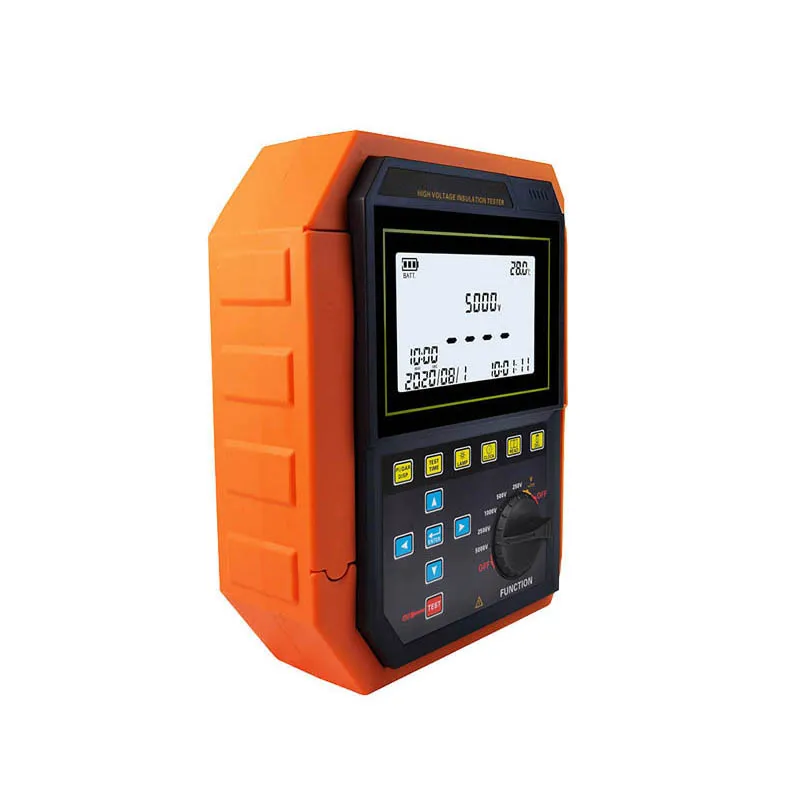 English
English


Evaluating Electrical Insulation Performance through Bushing Tan Delta Testing for Power Equipment
Understanding the Bushing Tan Delta Test
Electrical equipment plays a critical role in the functioning of modern society, and ensuring its reliability and safety is paramount. Among various tests conducted to assess the condition of electrical insulation, the Bushing Tan Delta Test stands out as a vital diagnostic tool. This test is specifically focused on assessing the insulation performance of bushings, which are critical components in electrical transformers and switchgear.
What are Bushings?
Bushings are insulation devices that allow electrical conductors to pass safely through a grounded barrier, such as the enclosure of a transformer. They are designed to withstand high voltages and provide electrical isolation as well as mechanical support. Over time, however, insulation materials can degrade due to factors such as thermal stress, electrical stress, humidity, and contamination. This degradation can lead to partial discharges, insulation breakdown, and ultimately equipment failure, making regular testing of bushings essential.
The Tan Delta Concept
Tan delta, also known as the loss tangent, is a measure of the energy loss within an insulating material when subjected to an alternating electric field. It is calculated as the ratio of the resistive (real) component of the current to the capacitive (reactive) component. A low tan delta indicates good insulation quality, whereas a high tan delta suggests higher energy losses and potential insulation problems.
The Bushing Tan Delta Test Procedure
The Bushing Tan Delta Test involves applying a high-voltage AC signal to the bushing while measuring the resultant currents
. The primary steps in conducting this test includebushing tan delta test

1. Preparation The bushing is isolated from the transformer or switchgear, and necessary safety precautions are taken to ensure a safe testing environment.
2. Test Equipment Setup A tan delta test set is connected to the bushing. This equipment generates a high-voltage signal, typically in the range of several kilovolts, and measures the resultant currents flowing through the bushing.
3. Measurement The test set records the currents and calculates the tan delta value in real-time. Multiple measurements may be taken to ensure accuracy and reliability.
4. Analysis The obtained tan delta values are compared against established benchmarks or historical data for the specific bushing type. A significant increase in the tan delta value compared to previous tests can indicate a deterioration in insulation quality.
Importance of the Test
The Bushing Tan Delta Test offers several advantages. It provides a quantitative measure of insulation integrity, allowing for early detection of potential failures. Regular testing can help in planning maintenance activities and can prolong the life of the electrical equipment. Moreover, it aids in risk management by identifying bushings that may require replacement or further inspection before they lead to catastrophic failures.
Conclusion
In conclusion, the Bushing Tan Delta Test is an essential diagnostic tool for assessing the condition of electrical insulation in bushings. By measuring the tan delta values, operators can gain insights into the insulation performance, detect anomalies, and ensure the reliability of crucial electrical infrastructure. Given the critical nature of bushings in electrical systems, regular monitoring through this test is not just a recommendation but a necessity in today’s increasingly complex electrical networks. With advancements in testing technology and increased awareness of the significance of insulation testing, the Bushing Tan Delta Test will continue to be an integral part of electrical asset management and maintenance strategies.
-
Differences between open cup flash point tester and closed cup flash point testerNewsOct.31,2024
-
The Reliable Load Tap ChangerNewsOct.23,2024
-
The Essential Guide to Hipot TestersNewsOct.23,2024
-
The Digital Insulation TesterNewsOct.23,2024
-
The Best Earth Loop Impedance Tester for SaleNewsOct.23,2024
-
Tan Delta Tester--The Essential Tool for Electrical Insulation TestingNewsOct.23,2024





